| HOME |
|---|
CORONA AUSTRALIS
The Southern Crown
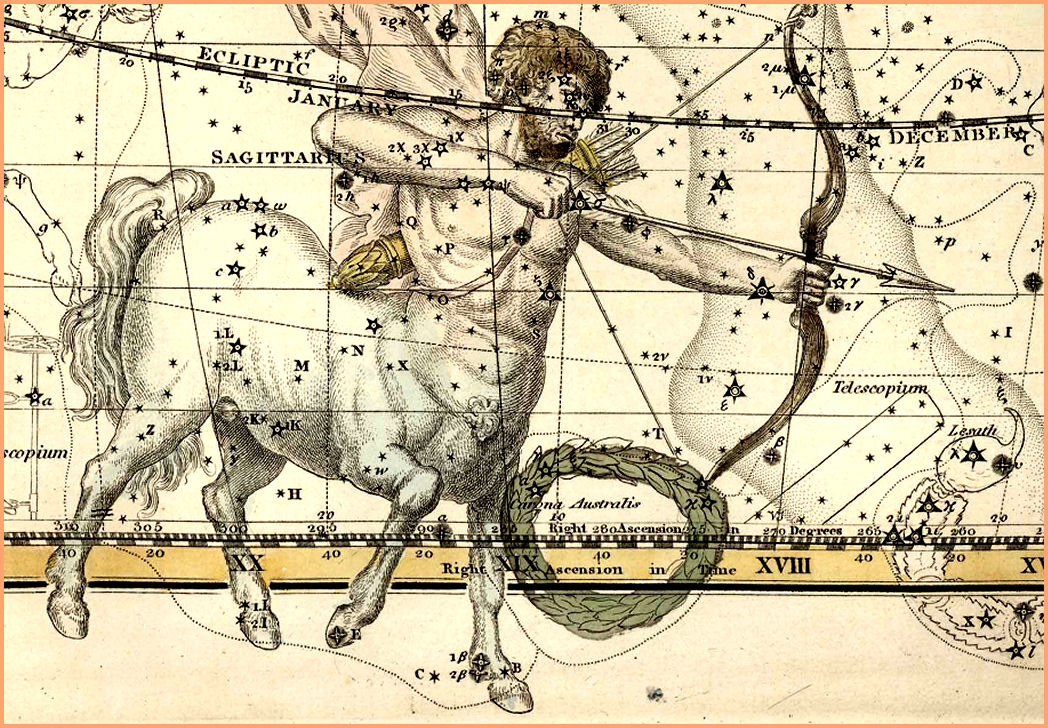
Corona Australis - Celestial Atlas by Alexander Jamieson - 1822
| HOME |
|---|

At the feet (hooves) of Sagittarius lies a crown of leaves. It is generally accepted that it is the crown of Sagittarius. In the second century AD, Ptolemy named it the "Southern Wreath". Now known as the Southern Crown, Corona Australis is a small but distinctive semicircle of stars, similar in shape, though not so bright, as Corona Borealis, the Northern Crown.
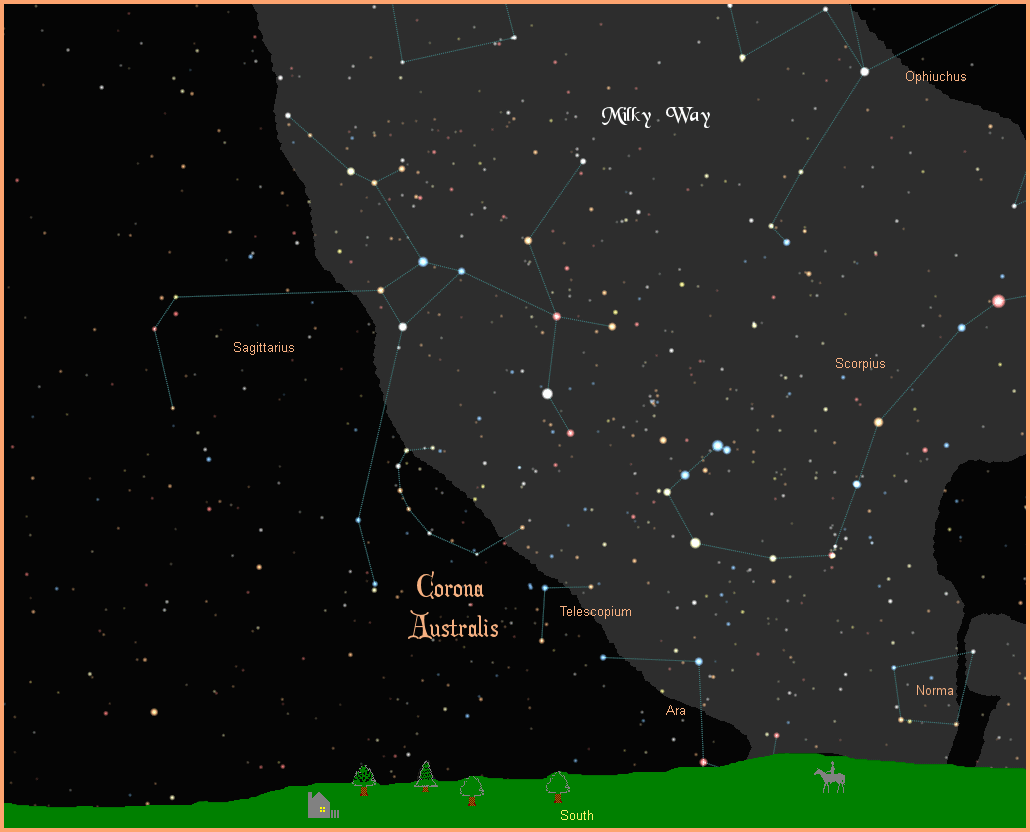
Alpha Coronae Australis is named Alfecca Meridiana, in deference to the Northern Crown's brightest star, "Alphecca". It is the only named star in the constellation, relatively unremarkable with a magnitude of only 4.10. Classified as a A2V white main sequence star, about 125 light years away.
Beta Coronae Australis is right next door with an identical magnitude of 4.10, sharing the mantle of brightest star. There the similarity ends though, as this star is very much larger and farther away. Classified as a K0III orange giant, it is 510 light years away.
So far only one star in Corona Australis has been found to host a planet. The star is designated HD 166724, with a magnitude of 9.34, putting it beyond naked eye visibility. It is K0IV yellow/orange subgiant, 140 light years away, with a gas giant planet about four times the size of Jupiter. For more information on these and other extrasolar planets, visit NASA's New Worlds Atlas, and The Open Exoplanets Catalogue.
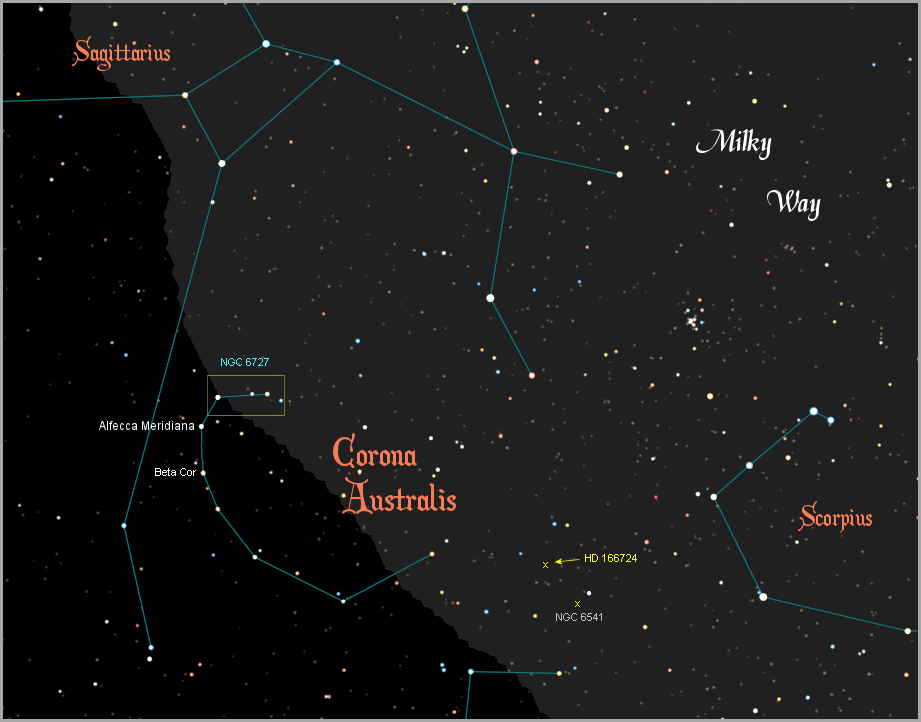
Sitting right on the edge of the Milky Way, the star fields surrounding Corona Australis are rich with star clusters and nebulae. One area of high interest is a large area of dark dust and reflection/emission nebulae, collectively designated as NGC 6727, and sometimes referred to as the Corona Australis Molecular Cloud. It is an immense region of superheated gas, million mph shockwaves, and intense star formation.
The wide field image below shows the clumps and wispy tendrils of dark interstellar dust contained in NGC 6727 stretching dozens of light years through space. The dark, elongated patch near the center of the photo is more than eight light years long. The entire molecular cloud is about 400 light years away, relatively close compared to the globular star cluster (NGC 6723) in the upper right of the image (across the border in Sagittarius) which is over 28,000 light years away.
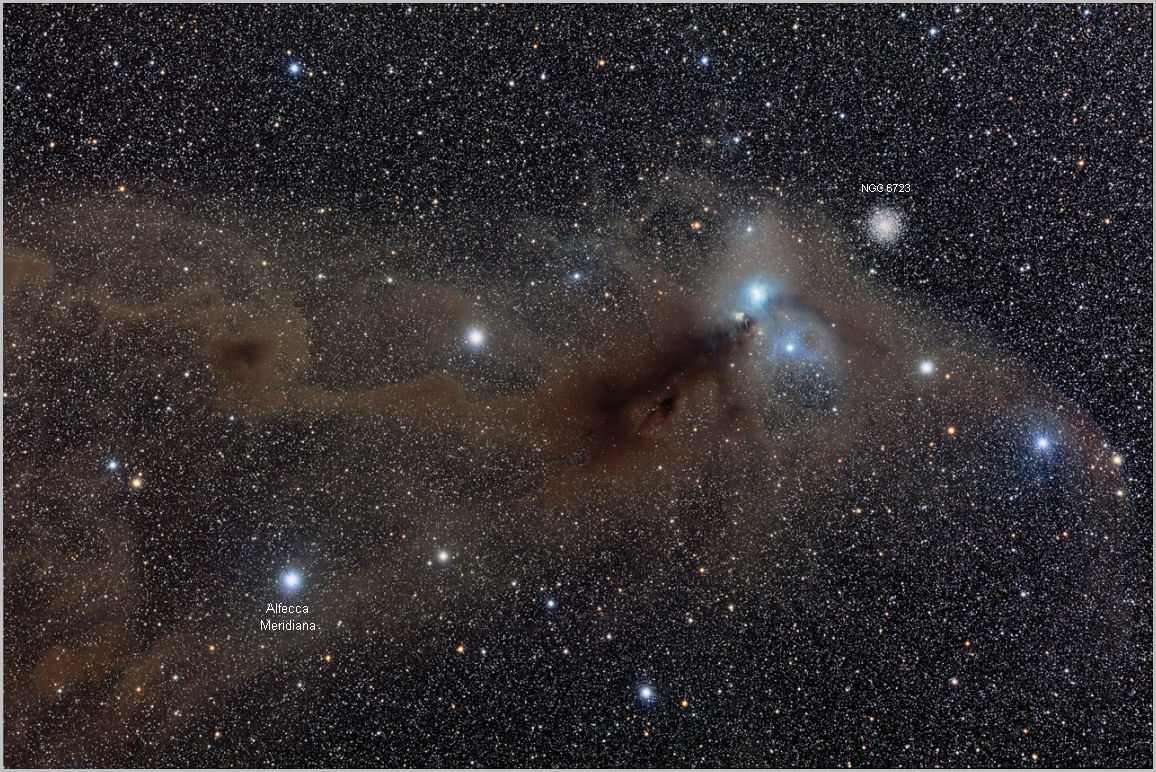
Up at the top end of the darkest dust cloud is an area of high luminosity labelled NGC 6729, and also known as the R Coronae Australis Nebula, after the newly formed variable star at its centre. The area contains the bright blue luminosities of NGC 6726, and IC 4812.
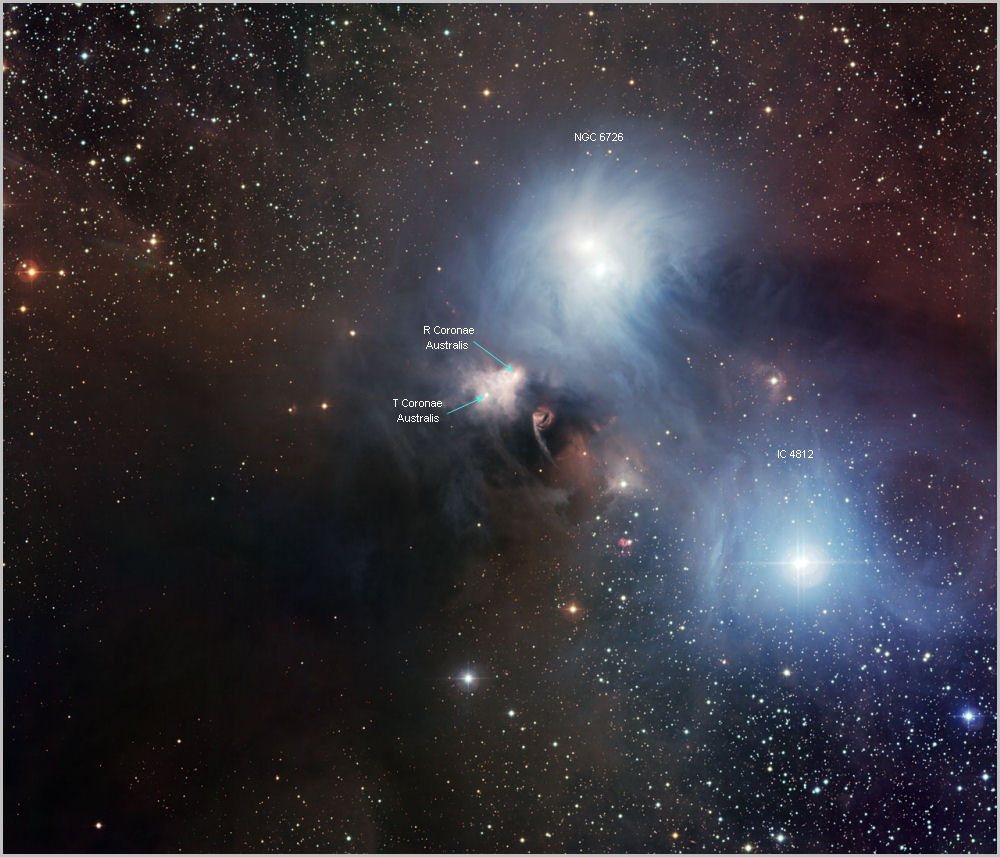
Finally, a detailed close-up view deep inside NGC 6729, showing intense activity, with billowing streams and swirling eddies of dust clouds, buffeted by the high energy shockwaves and gravitational fields generated by the violent birth of thousands of stars.
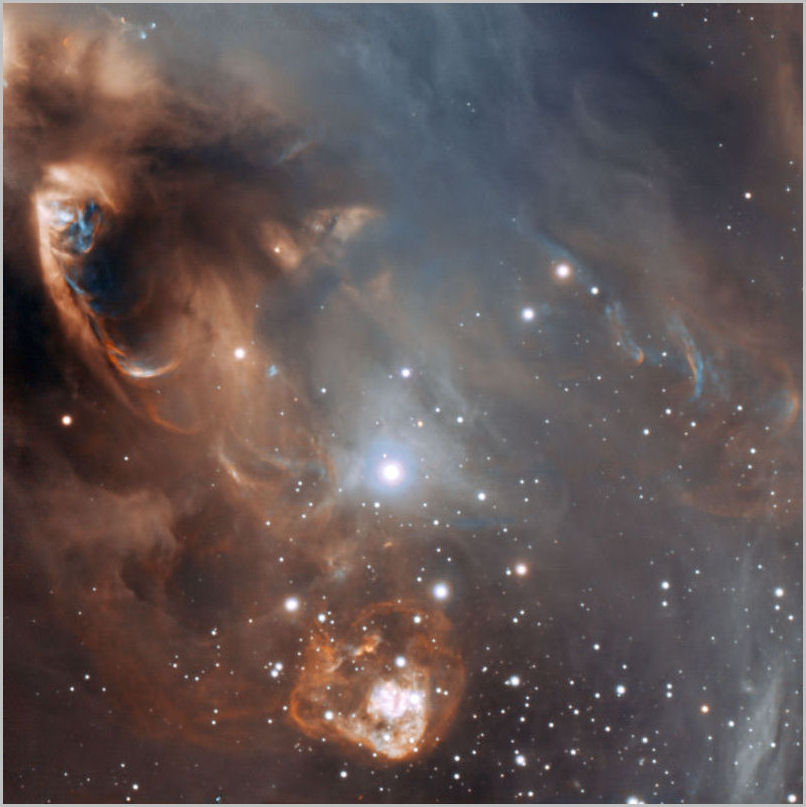
Down in the opposite corner of the constellation, Corona Australis also contains a globular cluster, NGC 6541. With a magnitude of 6.3, it is a good target for a small telescope. It is about 20,000 light years away.
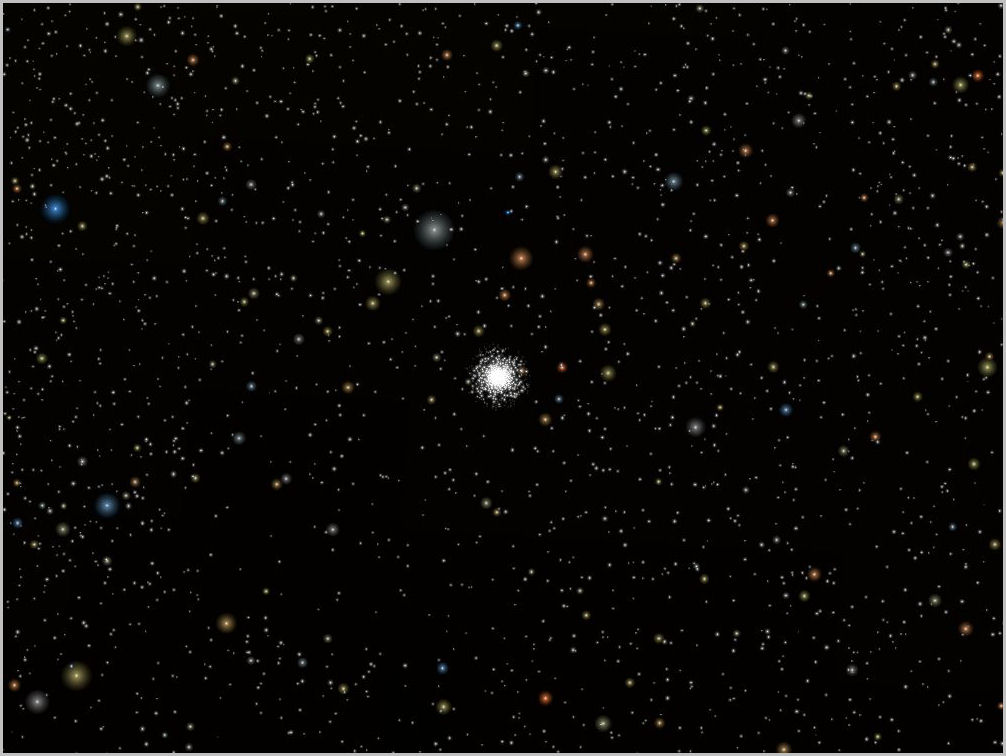
|
|
|
|
|
|